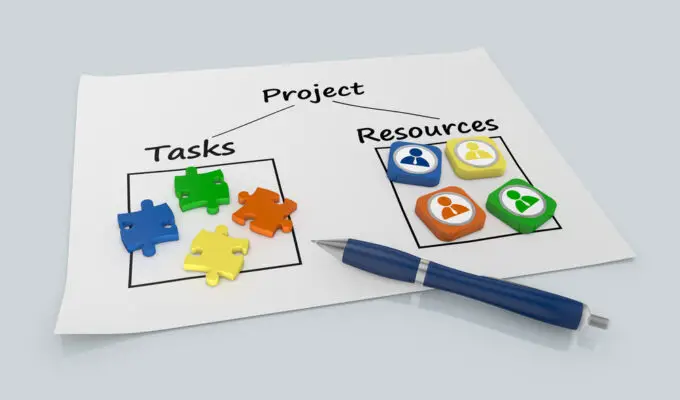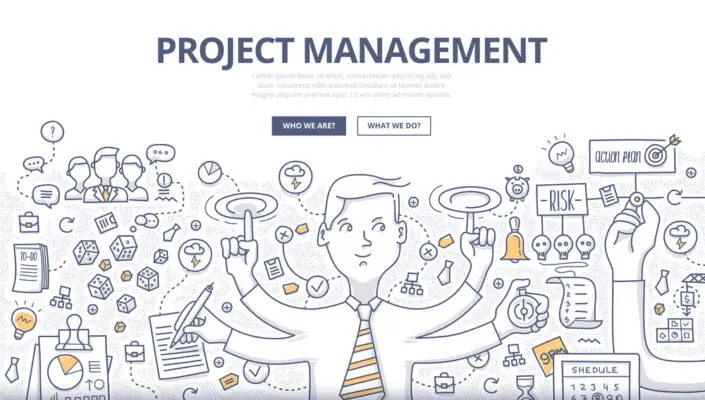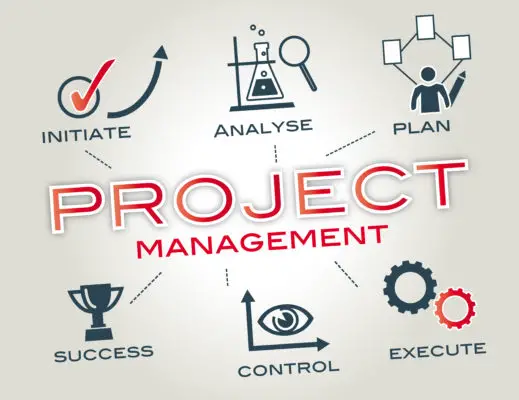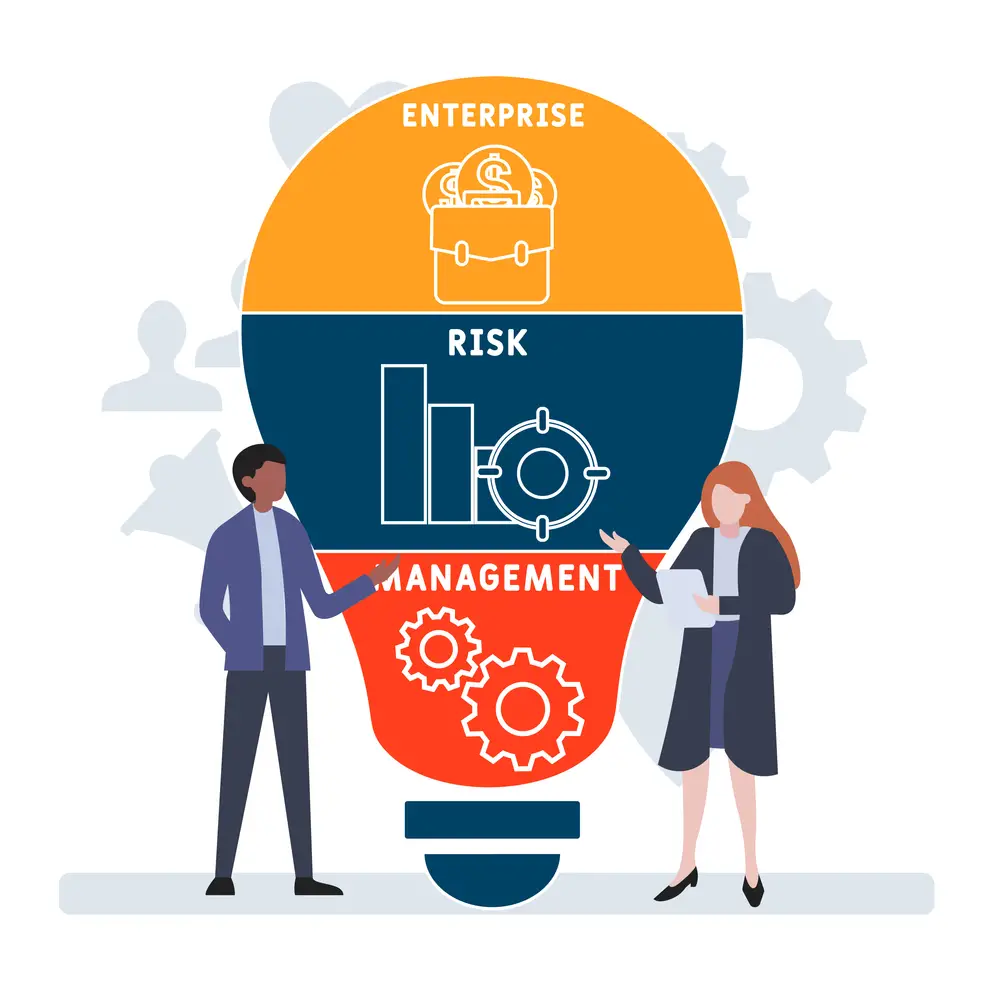Project risk management is the systematic process of identifying, analyzing, prioritizing, and addressing potential risks throughout a project’s lifecycle. It helps minimize the impact of these risks on your project’s objectives and empowers your team to make informed decisions and maintain stakeholder confidence.
In this blog post, we will delve into the core components of project risk management, discuss its significance in achieving project success, and explore key principles and tools that can streamline the process. Whether you’re a seasoned project manager or just stepping into this exciting field, this comprehensive guide will equip you with the insights and strategies needed to manage risks effectively and ensure your projects run smoothly from inception to completion.

Understanding the Core Components of Project Risk Management
To gain a solid grasp of project risk management, diving into its four core components is essential. This process involves identifying potential risks, assessing their impact and probability, prioritizing them effectively, and developing appropriate response strategies.
Identifying Potential Risks in Your Project
The first step in effective risk management is identifying potential risks associated with your project. This can be achieved through brainstorming sessions, expert consultations, historical data analysis, and a review of industry trends.
Be thorough in your risk identification process, as overlooking even a single potential risk can lead to costly consequences down the road. Remember to involve your entire team and other stakeholders to gather diverse perspectives and insights.
Assessing the Impact and Probability of Risks
Once you’ve identified potential risks, the next step is to assess their impact and probability. Evaluate each risk’s consequences on your project’s objectives, timelines, and resources. Also, estimate the likelihood of each risk occurring.
Tools such as risk matrices and probability-impact charts can help visualize and simplify this assessment process, allowing you to make informed decisions.
Prioritizing Risks for Effective Management
With a clear understanding of the impact and probability of each risk, you can now prioritize them. Focus on risks with high impact and high probability, as they pose the most significant threat to your project’s success. Prioritizing risks enables you to allocate resources effectively and concentrate on managing the most critical risks first.
Developing Risk Response Strategies
The final component of project risk management involves creating appropriate risk response strategies. These strategies can be broadly categorized into four types: avoidance, mitigation, transfer, and acceptance. Avoidance strategies aim to eliminate the risk entirely, while mitigation strategies reduce the probability or impact of the risk.
Transfer strategies involve shifting the risk to a third party, and acceptance strategies acknowledge the risk and its potential consequences. Your chosen response strategy will depend on the nature of the risk, its potential impact, and available resources.
Remember to continuously monitor and adjust your strategies as the project progresses to ensure optimal risk management.

The Importance of Project Risk Management
Project risk management is vital for the success of any project, regardless of its size or complexity. Through addressing potential risks, you can enhance decision-making processes, reduce uncertainties, protect resources, maximize return on investment (ROI), and improve stakeholder communication and trust. Let’s explore these benefits in greater detail.
Enhancing Decision-Making Processes
Effective risk management empowers project managers and teams to make informed decisions. With a comprehensive understanding of potential risks, their impact, and probability, you can choose the best course of action to minimize adverse effects.
This proactive approach fosters confident decision-making and paves the way for smoother project execution.
Reducing Project Uncertainties
Inherently, projects come with uncertainties that can lead to delays, cost overruns, and scope creep. Through systematically identifying, assessing, and prioritizing risks, project risk management helps reduce these uncertainties.
This allows your team to anticipate potential roadblocks and develop contingency plans, resulting in a more predictable and controlled project environment.
Protecting Resources and Maximizing ROI
Project risk management is crucial for safeguarding your project’s resources, including time, budget, and human capital. This ensures that your project delivers the desired outcomes within the allocated resources and contributes positively to your organization’s bottom line.
Improving Stakeholder Communication and Trust
Transparent communication is vital for building trust with project stakeholders. Regularly updating stakeholders on potential risks, their status, and their actions to address them demonstrates your commitment to the project’s success.
This proactive communication fosters a sense of trust and confidence in your ability to deliver the project as planned, leading to stronger stakeholder relationships and improved collaboration.
Key Principles of Effective Project Risk Management
To excel in project risk management, it’s essential to adhere to key principles that drive success. These principles include proactive risk identification and management, integrating risk management into project planning, regularly monitoring and updating risk assessments, and fostering a risk-aware culture within your team.
Proactive Risk Identification and Management
Being proactive in identifying and managing risks is critical to staying ahead of potential issues that could derail your project. Instead of waiting for problems to arise, actively seek out potential risks and develop strategies to address them. This approach ensures that your project stays on track, even when unforeseen challenges emerge.
Integrating Risk Management into Project Planning
Effective risk management should be integral to your project planning process. Incorporate risk assessments into every stage of your project, from initiation and planning to execution and closure. This ensures that potential risks are continuously evaluated and addressed, helping you maintain control over your project’s progress and outcomes.
Regular Monitoring and Updating of Risk Assessments
Risk assessments should be dynamic and adaptable to the ever-changing project environment. Regularly monitor and update your risk assessments to account for new information, changes in project scope, or evolving stakeholder expectations.
This ongoing vigilance enables you to adapt your risk management strategies as needed and maintain a firm grip on your project’s direction.
Fostering a Risk-Aware Culture in Your Team
Creating a risk-aware culture within your team is vital to effective project risk management. Encourage open communication about potential risks, share lessons learned from past projects, and promote collaboration in developing risk response strategies.
Tools and Techniques for Streamlining Project Risk Management
Effectively managing project risks requires leveraging various tools and techniques to simplify and streamline the process. This section will explore four powerful tools that can help you enhance your risk management efforts: Risk Breakdown Structure (RBS), Risk Matrix and Probability-Impact Assessment, Risk Register, and Monte Carlo Simulations.
Risk Breakdown Structure (RBS)
The Risk Breakdown Structure (RBS) is a hierarchical representation of potential risks organized by categories and subcategories. This tool helps project managers visualize and structure risks, making identifying patterns, interdependencies, and areas requiring particular attention easier.
Creating an RBS allows you to efficiently organize and communicate risks to your team and stakeholders, facilitating better decision-making and risk management.
Risk Matrix and Probability-Impact Assessment
A risk matrix is valuable for assessing and prioritizing project risks. It visually represents risks based on their probability of occurrence and potential impact, enabling you to quickly identify the most critical risks that demand immediate attention.
Coupled with probability-impact assessments, risk matrices allow you to make informed decisions about risk prioritization and resource allocation.
Risk Register for Comprehensive Documentation
A centralized document records all identified risks, their assessment, and corresponding response strategies. This tool provides a comprehensive overview of your project’s risk landscape, allowing for easy monitoring and management.
Regularly updating the risk register ensures that all team members and stakeholders stay informed about the status of risks and the actions taken to address them.

Monte Carlo Simulations for Quantitative Risk Analysis
Monte Carlo simulations are a powerful technique for conducting quantitative risk analysis. This method uses random sampling and statistical modeling to estimate the probability of different project outcomes, helping you better understand potential risks and their impact on your project’s objectives. Incorporating Monte Carlo simulations into your risk management toolbox, you can make data-driven decisions and improve your projects’ overall predictability and success.
Conclusion
Project risk management is an indispensable aspect of successful project execution, enabling teams to anticipate, address, and mitigate potential threats to their objectives. Understanding the core components of project risk management, such as identifying potential risks, assessing their impact and probability, prioritizing them, and developing effective response strategies, can help you navigate the uncertainties inherent in any project.
Furthermore, recognizing the importance of risk management in enhancing decision-making, reducing uncertainties, protecting resources, and fostering stakeholder trust can support project managers and teams in their risk management efforts.
Adhering to the key principles of effective project risk management, such as proactive risk identification, integrating risk management into project planning, regularly updating risk assessments, and cultivating a risk-aware culture, can significantly improve your ability to handle risks and uncertainties.
Leveraging powerful tools and techniques, like Risk Breakdown Structures, risk matrices, risk registers, and Monte Carlo simulations, can streamline the risk management process and facilitate data-driven decision-making.
As you embark on your project management journey, remember that managing risks is not a one-time effort but a continuous process that requires vigilance, adaptability, and collaboration.
Implementing these insights and best practices in your projects will equip you to face the challenges that lie ahead, ensuring smoother project execution and ultimately delivering value to your organization and stakeholders

Chris Ekai is a Risk Management expert with over 10 years of experience in the field. He has a Master’s(MSc) degree in Risk Management from University of Portsmouth and is a CPA and Finance professional. He currently works as a Content Manager at Risk Publishing, writing about Enterprise Risk Management, Business Continuity Management and Project Management.

